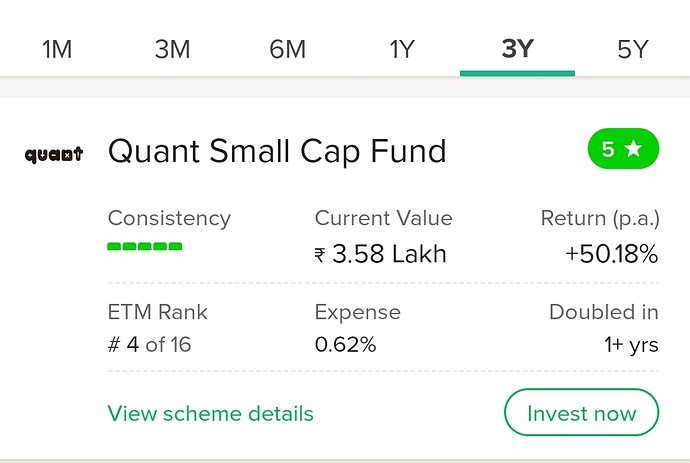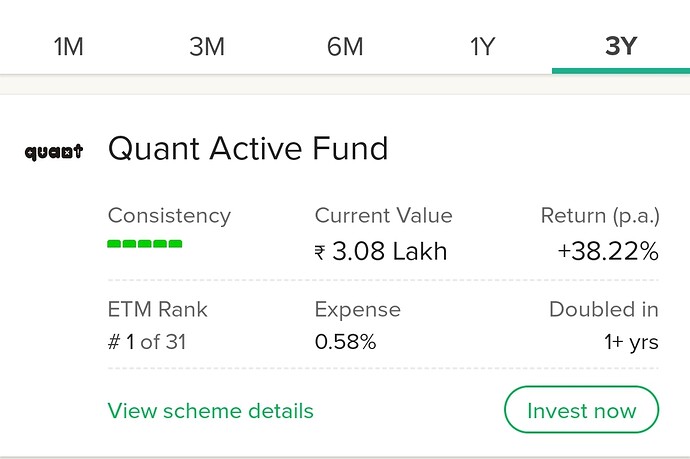Please help me with feedback.
I came to know about stock market near 2007 to 2008, when my father used to invest in stock market and he lost money and stopped investing in stock market completely.
I thought, I have something in me and I would fare better, traded 30k after my jee exam and played with leverage in intraday and exhausted 20k of the total capital in 2014. Though I won money in initial few days but one big loss and then everything fell apart. My trick was simple buy low and sell high with margin. I had identified a trick that stocks were lower near 10:30 AM and hence would buy at that time and would then go to sleep and then sell in the afternoon. I can not be more wrong. Now I don’t trade and reading book by peter lynch got to know that it is good decision to do so.
After losing money I could not muster enough courage to look again at the market till 2019.
Started putting some money in many mutual funds to see which grows faster on groww. Some were tax savers. In March 2020, again got nervous but put some more money. In next few months, took out all the money from the mutual fund that allowed withdrawal as I had some profit and I thought the market rising is temporary and it will fall again.
Kept thinking the same, till early 2021. My tax saver in which I was unable to withdraw money was up 50 percent plus at the same time read pyschology of money and understood the power of regular sip compared to other possibilities. Started investing again, this time proper sip in mutual funds. Though for each category, picked 2-3 mutual funds and the total mutual funds in which I invested through sip went over 10. I also did other mistakes.
Over 1 year, kept reiterating and current sip in mutual fund looks like this -
- Navi Nifty 50 Index Fund - 10
- Navi Nasdaq 100 - 30
- Midcap 150 quality 50 - 15
- Canara robeco small cap - 20
- Parag parikh tax saver(use it as regular fund) - 25
I prefer mutual funds with low AUM and low beta. I mostly go behind good fund mangers and good fund house in case of active mutual funds.
Mutual funds are more than 70 percent of equity portfolio.
Less than 30 percent is in direct stocks that I have started few months back, thanks to few books and soic.
I though tried my luck in us stock investing in 2021 with small amount and learnt the power of picking profit making, usual suspects at good price. I learnt this by reiterating fast after losing some money in AIRBNB and then recovering back the money in usual suspects like apple, j&j, google after selling AIRBNB, UBER, Lyft and other stocks.
My US portfolio
Berkshire hathway - 5%
Avg price - $300
Anchor to stop losses.
Alphabet - 4%
Avg price $110
Category - fast grower
Ads industry in growing with double digit cagr and same goes for cloud.
Anti competition threats and charges by governments.
Amplitude - 3%
Avg $14.6
Category → Fast grower
It has just one competitor which is mixpanel but there business is still little different.
Revenue growth 50 percent cagr
Have 330 million dollar in bank, will last them 8 to 10 years
Have used its product, its awesome
Proxy to tech companies as they charge per api call or page visit in simple language
Tailwind due to google analytics end of life
Have broken my investment principal to invest in this as it is loss making company
Alibaba - 3%
Avg $95
Available at 10 PE considering normalised earnings. Munger has bought it. As I work in ecommerce and hence feel that only market leaders ecommerce platform with no competition has chance of earning money. Plus cloud business is like a commercial land business in offline world, where everyone needs servers to start business.
Us and china conflicts is negative.
ADR structure is negative.
My Indian portfolio
Maharastra scooters - 5%
Avg 4000
Category → asset play with dividend field
Book value → 5 times current price
Dividend → more than 2 percent
Parag parikh mutual fund increasing its stake in this company
Could not find any reason on why pure holding company should trade at discount
Negative - They invest some percentage of dividend in bajaj finance FDs.
Syngene - 4%
Avg 540
Category → Fast grower
- Revenue growing at 20 percent
- Outsourcing helps reduce cost for first world countries
- Industry cagr at 8 percent
- Betting on india manufactoring ability due to diversification on risk
- Getting into manufactoring which 4 to 5 times profit margin than contract research
- Getting into biological formulatioms
- Hold by top mutual fund like mirae assest focused fund
- India cmo cagr 13.3
- Removing the depreciation of current non operational plant in mangalore, its PE ratio of 30 is quite attractive
- Pharma industry spends 15 to 20 perfect on research. So proxy to pharma companies
Employees not getting good salary and recognition and hence attrition can happen. Also regular facility audits negatives.
Hdfc - 2.5%
Avg 2250
Current category - stalwart
Market leader in housing finance
Consistent compounder of book value, profit and revenue
Merger with hdfc bank which grows at faster rate
Dividend 1.5 percent
Housing finance - cagr 22 from 2021 to 2026
Bajaj consumer - 4%
Avg 158.5
Type turnaround play with zero debt
Available at attractive valuation
Dividend yield is high 5%
Their new products are doing good and they are building the brand
Bajaj brand has some market value
700 crore of cash with zero debt
PE 15
Inventory problems will not be there as variety of products in less(compared to clothing industry)
Negatives
Currently only dependent upon one product whose sale is not growing
Even in sale low mrp product of bajaj almond oil is selling
Profit growth is negative
Revenue growth is flatish
Have broken my investing principal to invest in this as it does not have growth.



